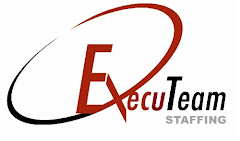
Great news! You received a call out of the blue from a recruiter who wants to see your resume quickly. But what if you haven’t kept it current?
First of all, consider asking for more time to pull things together. After all, the recruiter’s job is easier if your resume clearly tells the employer why you’re a strong candidate.
Now, on to getting that resume in shape! Here are 3 tips to help you craft a compelling document—even if you’re short on time:
1 – Focus squarely on the goal.
Nothing kicks an applicant out of the running faster than an unfocused resume. Therefore, you’ll need to build your value proposition around this particular job, laying the foundation for the strategy behind your resume. (You can always create a different resume for another job type later).
Add a resume title, using as many specifics as possible that reflect your goal, such as Sales Manager, IT Director, CFO, VP Operations, etc.
Next, you’ll need to write down ideas for a summary of your background and why you’re qualified for this particular position. The key to writing an effective summary is to tweak it and keep it flexible during your resume writing process, allowing different ideas to surface so that you can weave them into this section.
One idea that may make this task easier is to use short, brand-focused headlines in lieu of writing a full profile paragraph.
Remember to review your summary after finishing your resume as well. You might find that you’ve uncovered more information to add—forming the basis for a well-rounded, powerful introduction to the rest of your credentials.
2 – Jot down your major success stories.
Here is where you’ll need to spend the bulk of your time. Analyzing how your contributions have impacted your employers is a critical step in the resume writing process.
Start by making a quick list of key points that you’d make if you already had the interview. Take special note of the metrics behind each story and the impact of your work on the company.
Flesh each out to a small paragraph, cutting out extraneous details for brevity. It’s best to aim for a sentence of 3 lines or less that describes your role, the context behind each accomplishment, and the results.
Repeat this process a minimum of 3-5 times for each job that you’ve held in the past 10 to 15 years to fill in your resume. This task may take a few extra hours, but it will be time well spent on a resume that gives a compelling picture of your abilities.
Finally, add these stories in bullet-point form to your resume, with a basic job description in paragraph form to introduce each of your jobs. Here, you can describe the teams you’ve supervised, budgets managed, and other contextual details.
3 – Get feedback on your resume update.
This is an important step, but it’s one that many professionals miss. Colleagues, spouses, bosses, and friends can help you to recall any important projects you might have omitted, or leadership qualities that you should demonstrate in order to be considered for the job.
Be sure to ask others to help proofread your resume as well, since typos and other errors can escape even the best writer who is pressed for time.
That’s it! Now, take the time to compose a short note to the recruiter that points out your main qualifications and the reasons you’re interested in the job. Your new, superbly crafted resume can then do the rest of the talking.
By CAREEREALISM-Approved Expert, Laura Smith-Proulx
From www.careerealism.com




No comments:
Post a Comment